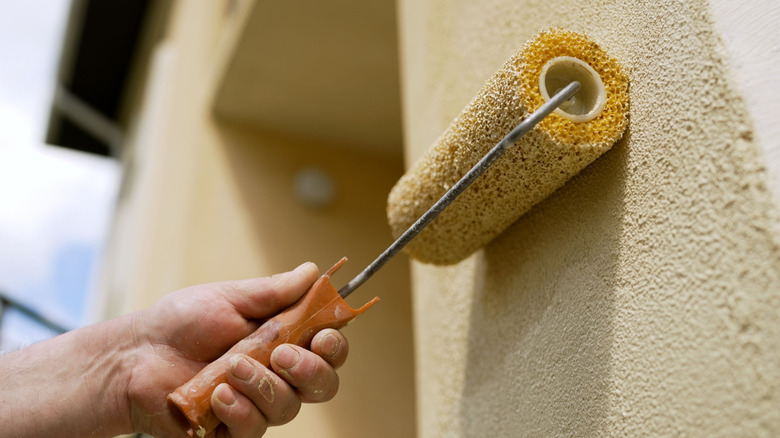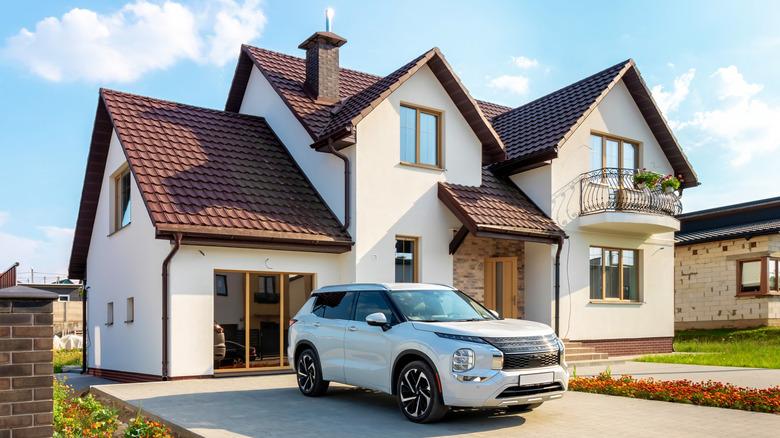The Worst Colors To Paint Your Home If You Live In A Warm Climate
A warm, sunny day is a simple pleasure more common in some places than others. Depending on the exterior color of your home, those days can feel even warmer. Whether you're looking for a more pleasing exterior aesthetic or to increase your home value, know that darker colors such as black, brown, navy, and other deep blue shades are less than ideal as an exterior color choice for homes in warmer climates.
In terms of dark paint thermal dynamics, paint has what's called a Light Reflectance Value (LRV) that measures how much light a color reflects. Paints with low LRV, which are the aforementioned dark colors prone to sunlight absorption, can absorb up to 90% sunlight. In contrast, most of the heat generated from sunlight is reflected with light-colored surfaces.
Even worse, dark paints with low LRV tend to fade over time, leading to a worn, damaged look that requires regular upkeep. Constant exposure from the sun's UV radiation will break down paint pigments, causing deterioration even in more vibrant colors. In short, paint colors with an LRV between 60 and 100 will reflect significantly more sunlight than lower valued colors.
The exact amount of heat generated by the dark colors is unclear. However, it is enough of a difference to affect more than just aesthetics and comfort. Your home's value can be negatively impacted from the exterior paint choice, not to mention your utility bills.
How lighter colors add to your home's value while keeping the temperature down
Giving your house exterior a new coat of paint can be an easy way to raise the value of your home — according to Consumer Reports, it could mean a potential increase of 2% to 5%. This is in part due to paint quality significantly improving over the last ten years. Prior to paint advancements, homeowners would find their home's exterior deteriorating in about five years — a job that costs an average of $3,177, according to Angi. This is assuming you chose a neutral color that adds curbside appeal for prospective buyers as well as reflects sunlight.
As you might guess, choosing lighter paint colors with a higher LRV results in lower cooling bills as the paint causes solar radiation to bounce away from your home rather than absorb into it. Just how much money you'll save depends on a number of factors, but a 2019 study performed by the California Energy Commission found that cool exterior walls for single-family homes in warm states like Florida and Texas allowed yearly HVAC energy use to decrease by 2% to 8.5%.
Color can also affect your home value in other ways. Using a lighter, neutral paint color in a small kitchen can make it feel much bigger, for instance. Meanwhile, glossy black granite, with its tendency to highlight smudges, is one of the worst kitchen counters for selling your house.
Painting your dishwasher, fridge, and even your microwave is another possibility that allows you to get the exact look you're going for. Unlike painting your kitchen appliances, though, your home's exterior color is more than just pure aesthetic. The color works as a natural heating and cooling unit for your home that can save you money on utility bills while increasing home value.

